Onpage Hero extends Google Analytics functionality with unique custom dimensions. This time we are focussing on automatically detecting web page word count using the Number of Words Onpage Hero custom dimension.
Firstly, make sure you have Number of Words dimension selected as part of your Onpage Hero plan. Free plans allow you to add up to 3 datapoints, whereas paid plans allow up to 20.
Upgrade today to access up to 20 datapoints
To check which datapoints you have access to, log in to your Onpage Hero account and click the little settings icon on the right. Now, select Change Datapoints to display your current setup.
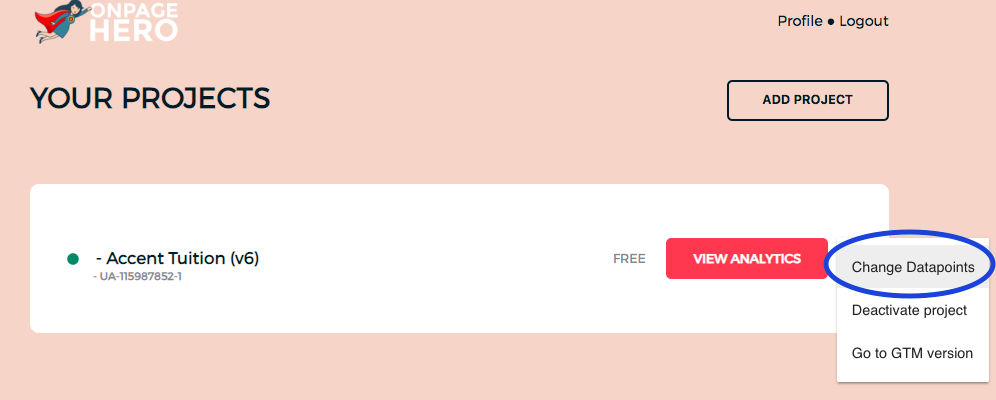
The options on the left show the datapoints applied to this property. Select the dimension Number of Words, click NEXT, then VIEW ANALYTICS to jump into your Google Analytics property.
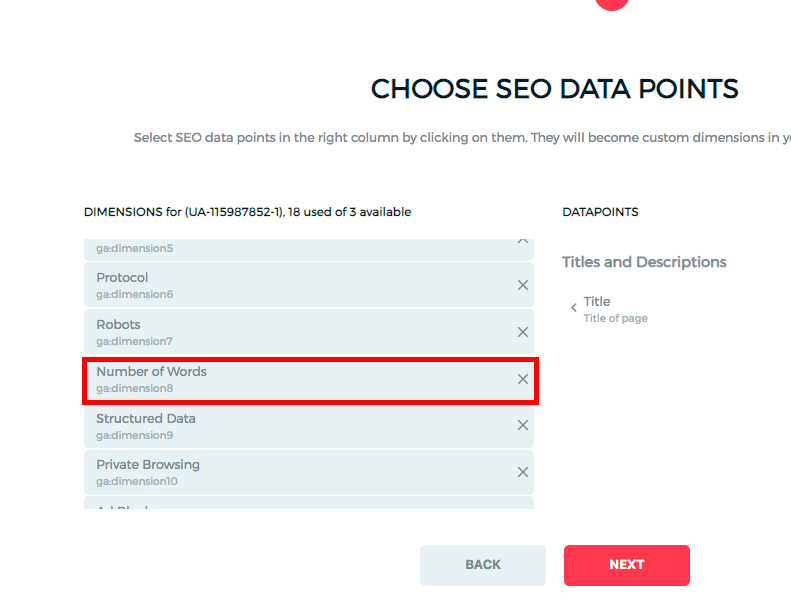
What is a web page word count?
Quite simply, the word count for a specific webpage is the number of words that appear on that page. For example, if you publish a blog post, its word count is the length of the article.
Why is word count important?
Word count is important because search engines such as Google use it as an indicator of content quality. If your site or blog has URLs with very low word counts, this may be an indicator of spammy or low-quality content.
Word count best practices
- Make sure each URL contains more than 300 words
- For informative content the higher the word count the better
- Combine thin content pages
- Use word count as an indicator for the correct number of header tags
Monitoring word count with Onpage Hero
To find the Number of Words custom dimension in Onpage Hero simply navigate to your default view within in your Google Analytics property.
Firstly, enter your Google Analytics property and navigate to:
Behaviour > Events > Top Events
Then, set Event Label as the primary dimension. This is your standard view for using Onpage Hero custom dimensions.
Not seeing any Onpage Hero data? Check that you have set up Onpage Hero correctly following this guide.
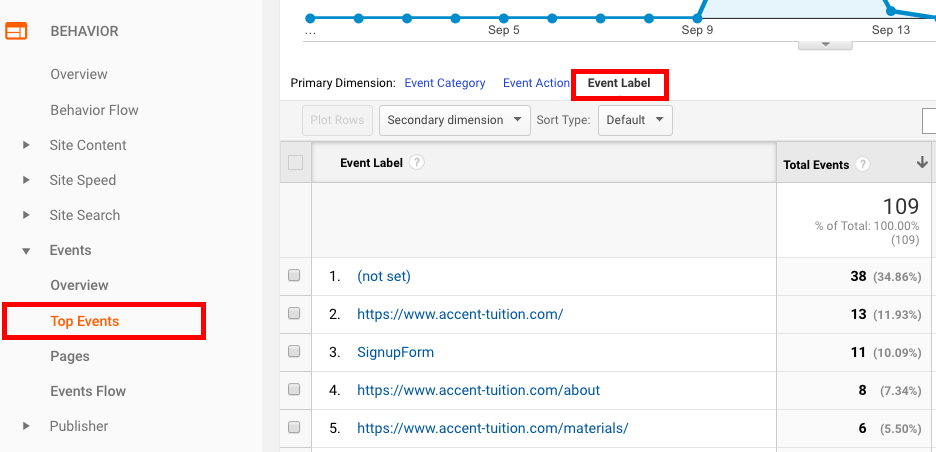
Ok, let’s take a look at our word counts. So, type “number of words” as a secondary dimension to display the results.
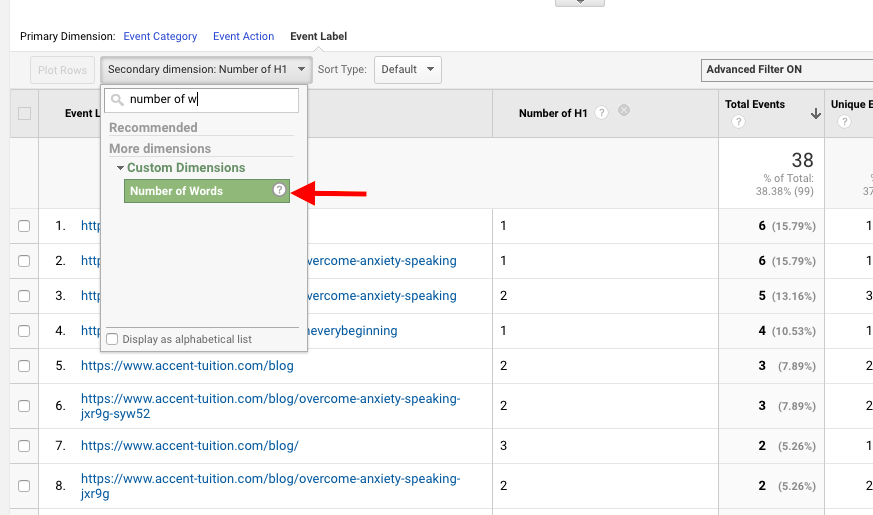
Here, we can see that one of the blog posts was originally only 100 words. This is far below the recommended amount for an informative post. The post was updated to 600 words and finally to a longer form style 1200 words.
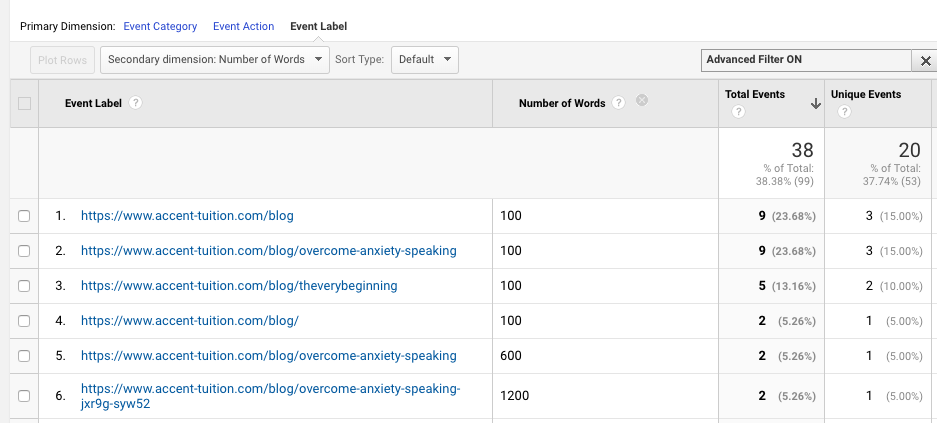
Onpage Hero custom dashboards: Content Data
Onpage Hero has a cool custom dashboard that displays word count and <h1>, <h2> tags side-by-side. This is extremely useful when you want to optimize your header tags. Head over to our dashboards page and grab the Content Data Dashboard.
Once you have got your custom report, select your Google Analytics property from the drop-down menu. Let’s take a look:
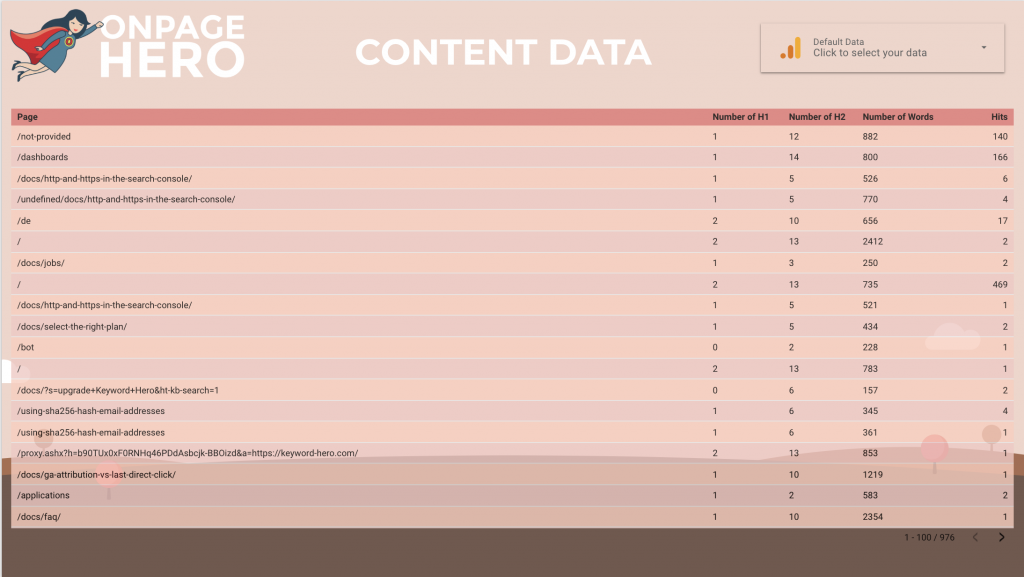
Content should be structured with header tags to help organize the text. In general, the higher the word count the more h-tags you need. Here, we have a good number of h-tags for the respective word count of each web page.
Key Takeaways: word count
- Use Number of Words to detect thin content
- Merge or delete thin content
- Use the Content Data dashboard to see word count and header tags together
Further reading
Already checked your header tags? Find out how with our h-tag custom dimensions.
Any issues or feedback? Let us know about your issues and product feedback via support@onpage-hero.com and we’ll be happy to help you.
